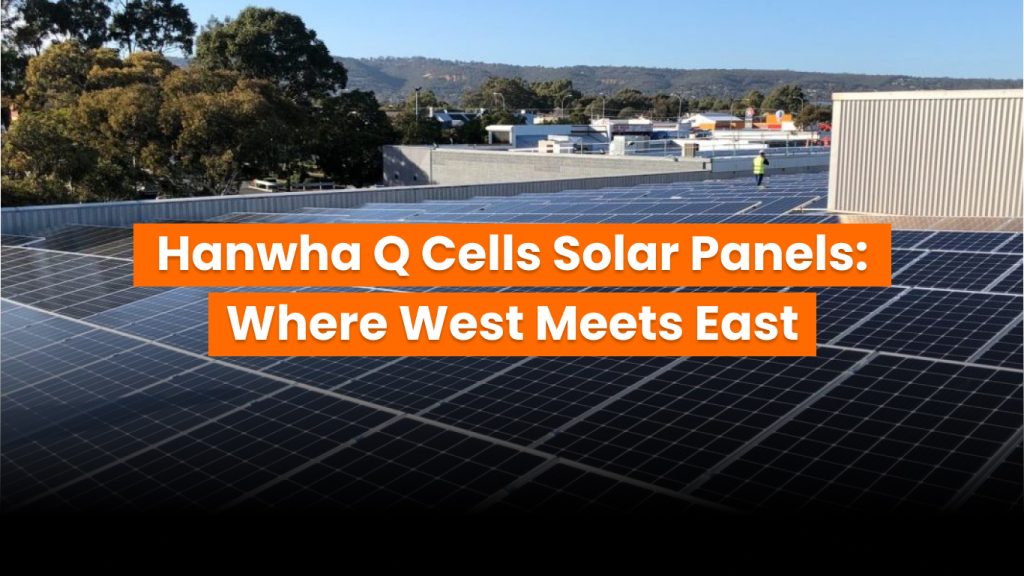In today’s competitive solar market, Hanwha Q Cells stands out as a bridge between Western engineering and Eastern manufacturing. Founded in Germany and now a subsidiary of Korea’s Hanwha Group, Q Cells blends German research and quality control with cost-effective South Korean production. This hybrid identity gives their solar panels global appeal—often offering both high performance and competitive pricing. Let’s explore what makes Q Cells unique, how their panel lineups stack up, and why they may be the right choice for your solar project.
Brand heritage and global reach
Hanwha Q Cells traces its roots to 1999 in Germany, where years of R&D shaped a strong technical foundation. As the company grew, it invested in innovations like PERC (passivated emitter and rear cell) technology, anti-LID/ZEB (light-induced degradation/zero energy bifaciality), and advanced cell passivation techniques. In 2012, Korean conglomerate Hanwha took a controlling stake, and by 2018 Q Cells merged into the Hanwha SolarOne division.
Today, Q Cells cells and modules are produced in advanced facilities in South Korea and Malaysia, with final modules assembled in places such as Georgia, USA, and South Africa. This global footprint allows them to meet regional quality standards, reduce shipping delays, and navigate import tariffs smoothly.
Technology that drives better performance
Q Cells panels are widely praised for their efficient use of light and robust design. Two important technologies to know:
- PERC technology – By adding a passivating layer to the back of each silicon cell, PERC panels capture more light, boosting overall efficiency. Q Cells often achieves 20–21% panel efficiency in mid-range models, with top-tier units nearing 22%.
- Q.ANTUM and anti-LID/ZEB – Q.ANTUM is Q Cells’ proprietary optimization system that uses selective emitter design and ion implantation to capture sunlight more efficiently, especially at low irradiance. Anti-LID/ZEB means panels are engineered to resist early degradation caused by exposure to sunlight during initial power-ups and retain performance over time.
Product line overview
Here’s a breakdown of their current residential and commercial offerings:
- Efficiency: ~21.4%
- Half-cut cell design reduces power loss and improves shade tolerance
- 25-year product warranty and 30-year linear performance guarantee (min. 86% at 30 years)
- Efficiency: ~21.6%
- All-black aesthetics appeal to homeowners valuing curb appeal
- Similar long-term warranty structure
- Efficiency: ~20.5%
- Budget-friendly option with solid value
- Sturdy build quality and product reliability
Q.MAXX G7 and G5 (commercial grade)
- Efficiency up to ~22.0%
- Designed for large installations; balances performance with cost
- Same warranties but built for heavy-duty use
Warranty details are industry-leading: Q Cells guarantees at least 98% of nameplate output in year one, 0.55% annual degradation, and 86% or higher output in year 30.
Performance in real-world conditions
Field studies consistently report Q Cells panels holding up well, even in hot, humid, or snowy climates. Their anti-LID/ZEB feature ensures minimal initial performance loss, unlike some panels that lose 2–3% in their first few days in sunlight. The half-cut design also increases resilience: if one part gets shaded or damaged, the rest of the panel keeps working more effectively than conventional full-cell designs.
Q Cells panels are rated for high mechanical loads—certified able to withstand snow loads up to 8,100 Pa and wind up to 4,000 Pa—making them suitable for heavy snow or severe wind zones.
Comparing benefits and trade-offs
| Feature | Q Cells solar panels |
| Efficiency range | 20–22% (depending on model) |
| Durability | Excellent (hail, snow, wind certified) |
| Warranty | 25-year product + 30-year performance |
| Aesthetics | Standard and all-black options |
| Temperature coefficient | Around –0.37%/°C (better performance in heat) |
| Price point | Mid to premium-range, good value |
| Manufacturing origin | Korea, Malaysia; U.S. assembly options |
Pros
- Strong European R&D with global production support
- High durability and low degradation rate
- Great warranties with substantial long-term value
- All-black models for homeowners prioritizing aesthetics
- Field-proven reliability across varied climates
Cons
- Slightly costlier than basic budget panels
- Availability can vary by region or installer inventory
- High-tier models may compete with other top brands at similar price points
Is Q Cells right for your project?
Use Q Cells panels if:
- You want 2,200+ W output per standard 72-cell panel (high efficiency with space constraints)
- You’re installing in hot or harsh climates and need panels with low temperature coefficients
- You care about visual appeal—especially with all-black models
- You value long-term performance stability backed by a strong warranty
- You prefer a manufacturer with Western R&D and Eastern manufacturing strength
Choose alternate brands if:
- Your project budget is tight and you want ultra-low-per-watt cost
- Panel aesthetics aren’t a priority for large commercial installations
- You want larger 78- or 96-cell format panels for expansive roofs or ground arrays
Overview takeaways
Hanwha Q Cells offers a balanced solar package: German-engineered performance meets Korean/Malaysian manufacturing efficiency. Their panels feature top-tier durability, low degradation, and strong warranties with real-world backing. While not the cheapest on the market, they offer strong value for homeowners and businesses seeking long-term reliability, aesthetic appeal, and excellent output—even under challenging conditions.
Sunhub, your trusted solar sourcing partner, stocks premium Q Cells modules alongside other top-tier brands. We can help you compare products, analyze ROI, and assess site-specific benefits. Whether you’re optimizing limited rooftop space or building a utility-scale installation, our experts are here to assist.
If you’d like detailed quotes, site analysis, or assistance navigating local incentives and installation logistics, our team at Sunhub is ready to support your solar journey.

